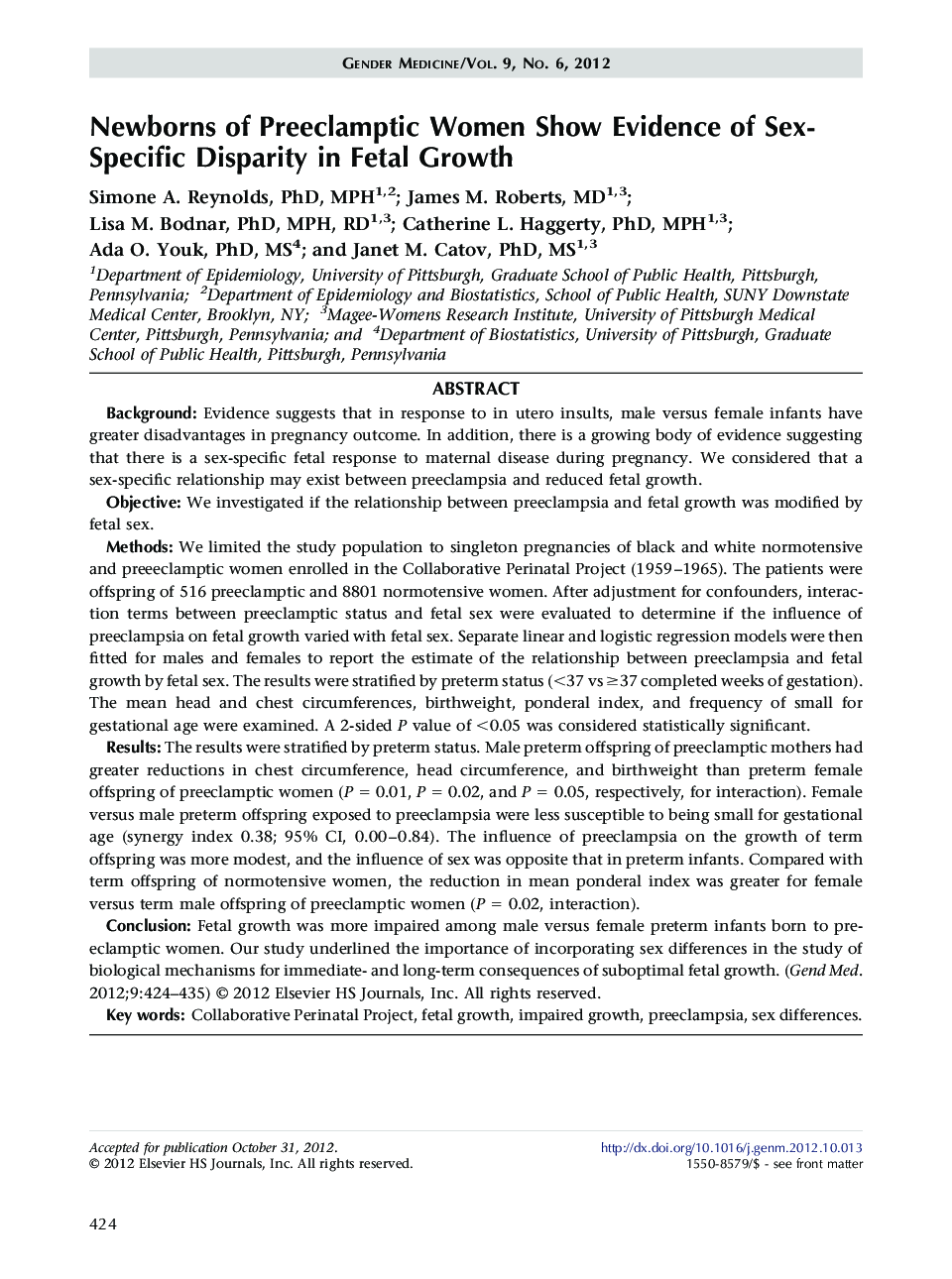| کد مقاله | کد نشریه | سال انتشار | مقاله انگلیسی | نسخه تمام متن |
|---|---|---|---|---|
| 2915509 | 1575706 | 2012 | 12 صفحه PDF | دانلود رایگان |

BackgroundEvidence suggests that in response to in utero insults, male versus female infants have greater disadvantages in pregnancy outcome. In addition, there is a growing body of evidence suggesting that there is a sex-specific fetal response to maternal disease during pregnancy. We considered that a sex-specific relationship may exist between preeclampsia and reduced fetal growth.ObjectiveWe investigated if the relationship between preeclampsia and fetal growth was modified by fetal sex.MethodsWe limited the study population to singleton pregnancies of black and white normotensive and preeeclamptic women enrolled in the Collaborative Perinatal Project (1959–1965). The patients were offspring of 516 preeclamptic and 8801 normotensive women. After adjustment for confounders, interaction terms between preeclamptic status and fetal sex were evaluated to determine if the influence of preeclampsia on fetal growth varied with fetal sex. Separate linear and logistic regression models were then fitted for males and females to report the estimate of the relationship between preeclampsia and fetal growth by fetal sex. The results were stratified by preterm status (<37 vs ≥37 completed weeks of gestation). The mean head and chest circumferences, birthweight, ponderal index, and frequency of small for gestational age were examined. A 2-sided P value of <0.05 was considered statistically significant.ResultsThe results were stratified by preterm status. Male preterm offspring of preeclamptic mothers had greater reductions in chest circumference, head circumference, and birthweight than preterm female offspring of preeclamptic women (P = 0.01, P = 0.02, and P = 0.05, respectively, for interaction). Female versus male preterm offspring exposed to preeclampsia were less susceptible to being small for gestational age (synergy index 0.38; 95% CI, 0.00–0.84). The influence of preeclampsia on the growth of term offspring was more modest, and the influence of sex was opposite that in preterm infants. Compared with term offspring of normotensive women, the reduction in mean ponderal index was greater for female versus term male offspring of preeclamptic women (P = 0.02, interaction).ConclusionFetal growth was more impaired among male versus female preterm infants born to preeclamptic women. Our study underlined the importance of incorporating sex differences in the study of biological mechanisms for immediate- and long-term consequences of suboptimal fetal growth.
Journal: Gender Medicine - Volume 9, Issue 6, December 2012, Pages 424–435